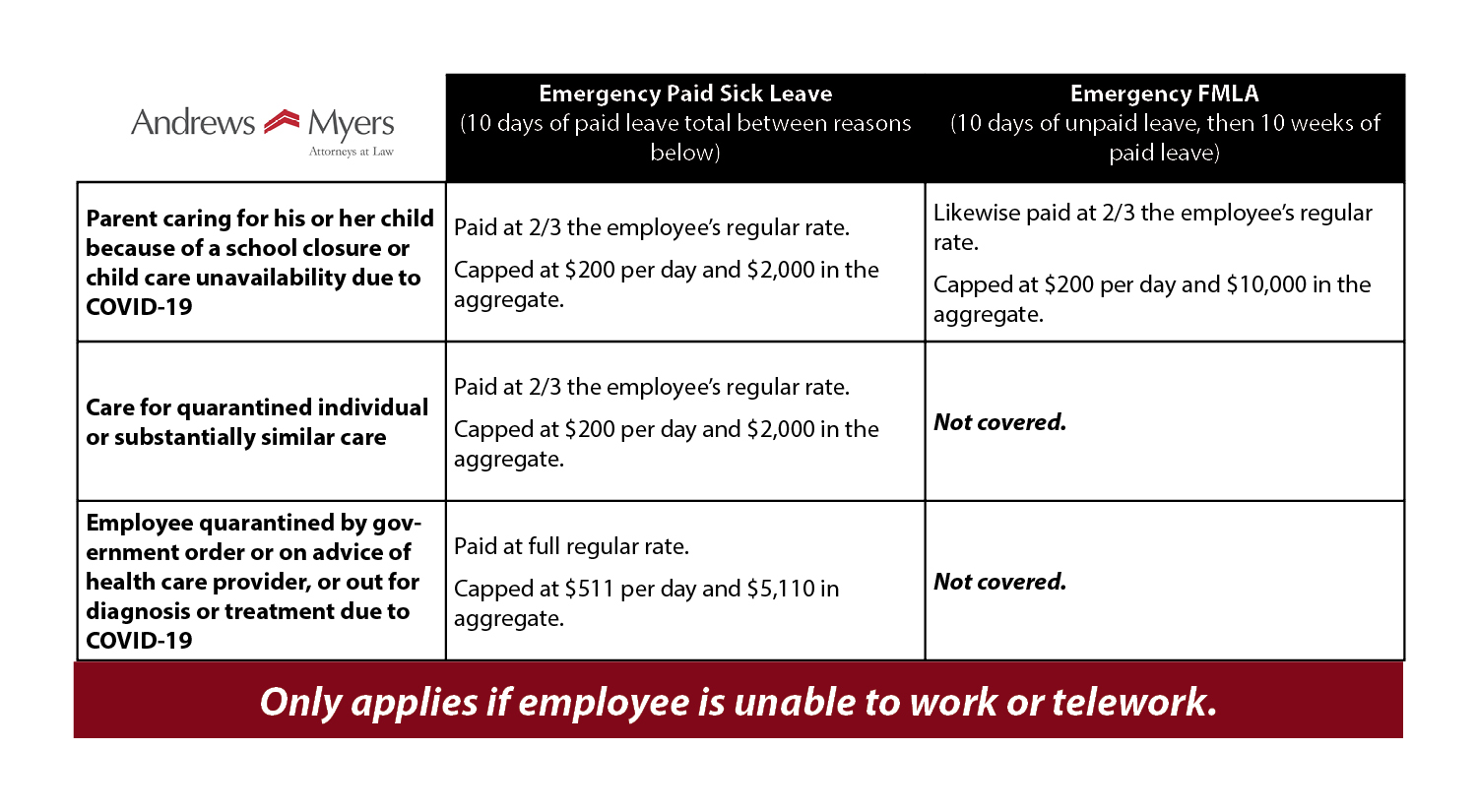Preparing for a Return to the Workplace
 April 21, 2020 — Governors across the United States are preparing and planning for the eventual reopening of the economy in light of signs that the Coronavirus pandemic (at least for now) may be starting to slow. Employers also must be ready themselves for the return of employees to the workplace and prepare for what our new normal will look like in the wake of COVID-19.
April 21, 2020 — Governors across the United States are preparing and planning for the eventual reopening of the economy in light of signs that the Coronavirus pandemic (at least for now) may be starting to slow. Employers also must be ready themselves for the return of employees to the workplace and prepare for what our new normal will look like in the wake of COVID-19.
Evaluation of Business Needs
Although it is hard to find a silver lining to this crisis for many employers, the changes in the way almost every business has operated for the last month is a testing ground for new ways of working. As employers evaluate their return to work strategies, this is a good time to ask: What efficiencies have we gained from allowing flexible or telework? Do we gain efficiency having people return to the office? Are some departments more easily operating from home than others? Although employers do not need to make long term decisions about how and where their employees work, the return to work strategy should include an evaluation about both how to efficiently operate your business and how to foster the safety of your workers.
Employees Return to the Workplace
As employees return to the workplace, employers have available to them multiple strategies to prevent and minimize the risk of workplace exposure. The current Centers for Disease Control recommendations for employers is located here.
Employers are allowed to measure employees’ temperatures before they enter the facility or ask employees to self-report temperatures. If employers intend to check employee temperatures, then the person(s) monitoring that should be well trained on the approved technique for taking temperatures, including use of a touch free or infrared device, the safety protocol surrounding the action, and the importance of keeping all employee information confidential. All employees who have a temperature of 100 degrees or higher should not be allowed to enter the workplace. Employers should also communicate with employees to monitor:
-
- If they have symptoms consistent with COVID-19
- If they have been exposed to an individual who has tested positive for COVID-19 or has been told they are presumptively positive for COVID-19
- If they themselves have tested positive for COVID-19
Any symptomatic or positive employee should be immediately sent home. Also, employees who become sick during the day should be immediately sent home. All employee health information and temperature readings should be kept strictly confidential. If an employee refuses to answer any such questions, or if they refuse a temperature check, they should be sent home.
All employees should be required to practice social distancing while at work and stay in separate workspaces as much as possible. Employees should not congregate in common areas and should use tele-meetings when possible. Employers should be discouraged from hosting non-work staff in the office. Handshaking should be discouraged. Employers should provide employees all protective gear necessary, such as facemasks and hand sanitizer. Employers should also disinfect and clean workspaces and common areas routinely.
FFCRA:
The FFCRA Paid Sick Leave and Childcare Act Leave Acts are still in effect and provide paid leave for employees who cannot work or telework for various reasons.
 These acts do not provide for paid leave for those who do not report to work or telework due to concern of catching the virus. 80 hours of paid leave is available, however, for employees who cannot work or telework due to underlying medical conditions, which make them more vulnerable to COVID-19 where a healthcare provider advises them to stay away from the workplace.
These acts do not provide for paid leave for those who do not report to work or telework due to concern of catching the virus. 80 hours of paid leave is available, however, for employees who cannot work or telework due to underlying medical conditions, which make them more vulnerable to COVID-19 where a healthcare provider advises them to stay away from the workplace.
Workplace Positive COVID-19:
Recommendations from the CDC on safety practices for critical infrastructure or essential employers, focusing on how to continue to have employees work who may have had exposure to a person with suspected or confirmed COVID-19 can be found here.
It is expected that the general return to work recommendations will be similar to these recommendations from the CDC on critical infrastructure/essential employers.
In general, where employers receive notice that an employee who has been in the workplace has tested positive for, or had symptoms of COVID-19, the employer may take actions to protect employees that do not necessarily require the entire work place to be shut down or entire groups of employees to be sent home.
Here is a summary of the guidelines:
-
- Employers should notify other employees of the possible exposure while preserving the confidentiality of the employee’s health/medical information. “Possible exposure” in the work place means having close contact within 6 feet of that individual within 48 hours before that person became symptomatic.
- Employees who have had a “possible exposure” should:
-
- Be pre-screened by employers by measuring temperature and checking symptoms ideally before they enter the workplace
- Be monitored by employer for symptoms
- Wear a mask or face covering
- Engage in social distancing
- Go home immediately if symptoms start. Employers should obtain information from this employee on who that employee has possibly exposed, and should repeat this process with any other employee with “possible exposure.”
-
- Employers should disinfect and clean work spaces, including all shared spaces.
Employers can also consider other, business specific, requirements for employees to keep them safe. These can include using video calls internally to allow for face time, but avoid inperson meetings. Other matters to consider include rules for use of break rooms, cafeterias, and other gathering places. Some employers are considering split shifts to avoid having all employees in the office at the same time, or continuing to encourage tele-work in the near term.
As always in these circumstances, clear communications and reporting rules are critical. Employers should make sure supervisors understand, can communicate and will enforce these rules.
For more information, please contact Tony Stergio or Elaine Howard.
###
Celebrating 30 Years in 2020
Founded in 1990, with offices in Houston and Austin, Andrews Myers, Attorneys at Law, is a corporate law firm and recognized market leader in Texas construction law. The firm focuses on the concentrated disciplines of commercial litigation, construction, commercial real estate, corporate and business transactions, with additional emphasis on related issues including bankruptcy and insolvency, energy, employment and capital formation. A seasoned team of attorneys provides timely and cost-effective solutions to the most complex problems facing entrepreneurs and middle-market industry leaders throughout the state and the nation. For more information please visit www.andrewsmyers.com.
